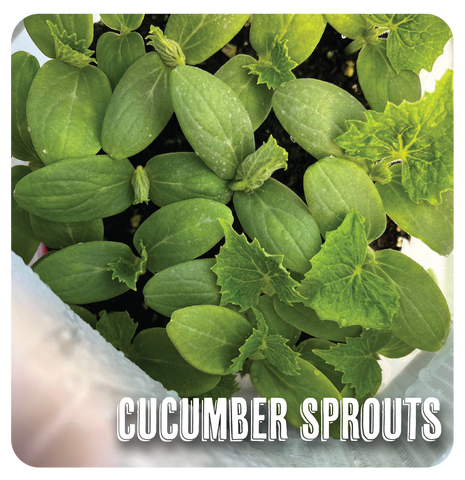Winter Sowing is an interesting step gardeners are taking towards trusting the seeds to germinate when they are ready.
We have some success stories to share from the experiences of gardeners in the Treasure Valley, Rigby Idaho, and a special tip from a seed friend on the other side of the country to share with educators!

Last season we provided some basics for how winter sowing works. Read here for details!
Cindy Nipper in Rigby, ID growing zone 5a, sows all of her tomatoes in jugs! As she notes, “I need all the help I can get.” Given the shorter growing season, that’s the best way she can ensure that she’ll have tomatoes come summer.

This season Cindy is growing Johnny Jump Ups, a color mix of Petunias, Broadleaf Plantain, and the Sunspot Sunflower to contribute to the cooperative seeds!
Cindy started gardening about 10 years ago. “We’re military, we move around a lot. Every place we go I start from scratch. Every 3 years we tend to move.” In the last location her “region was similar temp, but more wet. Rains every week. We had trouble with weeds. If I went away for a week they’d run over. I started researching ways to deal with it. No Till means I don't till the soil, but I'll used native soil and add manure, compost, leaves, hay, straw, wood chips, and other compostable materials to improve the soil. This is often described as Deep Mulch, the Ruth Stout Method, Back to Eden, Lasagna Gardening, etc.”
I asked about some of her observations.
“Tomatoes can’t be planted till the first week of June, and first frost is mid-September.” Last season they did amazing!
Initially, she planted many different seeds and none came up. So she went to a nursery and got four. She said that “about a week after my transplants went in I was checking my winter sow jugs and there were a number of them, though they were small. About 1 in.” She had a lot of people tell her it was a good year for tomatoes.
With winter sowing “I start in Jan/Feb and continue all the way until it’s time to plant. I transplant my tomatoes in the first week of June.” I asked about other forms of season extension. “I tried used the Wall O Water, but noticed it didn’t make a difference, so went back to planting a week or two later.”
She’s been following some growing advice from a fellow in Salmon, ID. He puts fish, egg shells and banana peels in the hole and fertilizes once a week. She fertilizes more randomly, and changes up her recipe (upcoming compost tea recipe!), based on what’s available and when. Sometimes it’s just comfrey.

In 2022, Julia Bennett Sanderson sowed everything in jugs, providing these excellent notes and findings! Julia is an avid home gardener, and has been working on a school garden at Grace Jordan Elementary in Boise, ID where she also serves as the President of the Parent Teacher’s Organization. She’s been with Treasure Valley Community Gardens Cooperative since late 2020, and this season plans to lend some of her studied insight while working in a co-op community garden near her base of operations. This includes Matt Powers Regenerative Soil course!
Julia’s report on Winter Sowing:
Tomatoes did well — it took forever for them to turn color — they popped in April. I covered them with comforter blankets when it got to be 34 degrees or less. They were much stronger plants, no tomato blight!
The dill did really well like always, and I have a ton of seed from those plants for next year!

Out of the two dozen jalapeño plants, about 15 thrived enough to transplant out. I kept 6 and shared the rest with others. Two of the plants have given me lots of medium sized peppers (guessing about 2 dozen each), but I only fed them once this season.
The onions transplanted really well, but I was impatient and harvested them before their full potential!
The beans were transplanted May 1st, I covered them with the last couple frosts but I think their growth was stunted and they never produced. They were beautiful though and I loved the different colors. 
The cucumbers actually transplanted much better than expected. I over-seeded my jug and was worried their roots were going to be too disturbed. However, the roly-polies mowed down most of them!
I got two plants that powered through, and they have been high producing and did pretty well through the summer. I had enough for my kids lunches nearly every day for quite some time. They are surprisingly hardy too—I kind of neglected them with regard to watering, and I only fed them once. I will definitely grow this variety again.

For educators, we want to uplift this example from Bonnetta Adeeb, a Commissioner with the Cooperative Gardens Commission, and founding member of the Ujamaa Black Farmers Alliance based in the D.C. area. Bonnetta sows everything in the winter (and uses this method in the summer) too! An educator for 37+ years, she’s found that sowing 100 seeds at a time in 5 gallon buckets allows her to start enough seedlings to distribute to the many communities she serves, with a focus on “minority and under-served youth pursuing higher education in STEM related fields.” She works with schools ranging from elementary to college, and has noted that it’s very handy to have a large number of seedlings going for their hands-on learning.
Winter sowing is just one more method of starting many variety of plants from seed, working with Nature by trusting the seeds to germinate when they are ready!



